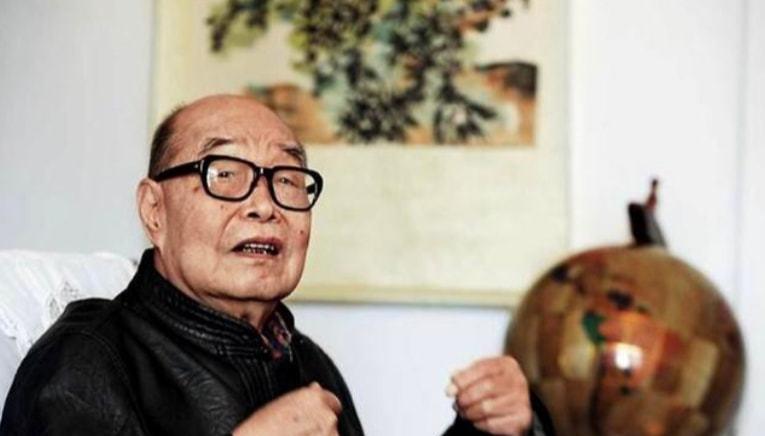In 1952, the founding general Wang Fuzhi was buried in the command post by a bomb of the US army, and just when everyone had given up hope of rescue, two flies flew out, which made people feel very energetic.
As long as the fly can live, man will certainly live. After 36 hours, Wang Fuzhi and Wang Shengwu, deputy chief of the operations section, were finally dug out, and although they were still alive, they only had one breath left.

Wang Fuzhi's injury also began with a test conducted by Van Vliet, the destruction of the gun hole test. Because the positions of the Chinese and North Korean troops were helpless with ordinary bombs, he hoped to directly destroy the tunnels and gun holes of the volunteer army and blow up the tunnels of the Chinese. It was in this experiment that Wang Fuzhi's empty opening was blown up.
So how strong were the volunteers' tunnel fortifications? Why did Van Vliet conduct the experiment of destroying the gun hole? Let's see how Li Feng's "Decisive Battle of Korea" describes the tunnel tactics of the volunteer army.
By the time the volunteers began digging tunnels, Peng Dehuai had left the Korean battlefield with confidence. The U.S. military was helpless against the volunteers on the front lines. In those days, the Americans fired artillery on it, and the volunteers dug holes underneath.
This is one of the most powerful tunnel defense networks in the world, and it is countless underground Great Walls. In these underground tunnels, there are traffic trenches, main roads, even toilets, auditoriums, conference rooms, restaurants, dormitories, it is simply an underground city.
According to Li Feng's "Decisive Battle of Korea", the Chinese army dug a total of 1250km of tunnels, equivalent to digging from Lianyungang to Xi'an in China. The length of the various communication trenches dug by the volunteers reached 6240 km, which was longer than the Great Wall.
In order to dig these tunnels, we dug up the earth and stone squares up to 60 million cubic meters, and if we arrange these earth and stone squares according to the size of 1 m?, we can circle the earth's equator for a week and a half. And almost all of this was done by the warriors with their hands.
"The Decisive Battle of Korea" tells the memories of a veteran of the Volunteer Army who participated in the excavation of the tunnel: at that time, each company would spend thousands of steel brazes a month, spread out the palms of each soldier, and find that they were all layers of extremely thick hard cocoons.
What are the benefits of these tunnels? In the summer and autumn operations launched by Ridgway, an average of 50 shells would kill and injure one volunteer, but after the tunnel fortifications were basically completed, the US military had to fire 660 shells to kill or injure one Chinese army.
Some Japanese experts were very shocked to say: Since the existence of the tunnel, the volunteer army's fighting style has changed from the previous mobile warfare to the defensive position warfare. Their artillery seemed to be growing, and they were very well concealed. If you look at it from the sky, from the west coast to the east coast has almost turned into a huge hive, the ability of the Chinese soil work is really amazing.
Ridgway also received a report: If these tunnels are to be completely destroyed, the Americans may have to pay more than 800,000 deaths, which makes Ridgway feel very headache. Call the tunnels of the Volunteers an insurmountable abyss of death.
In fact, since the beginning of the pit war, the Americans have known that the war cannot be fought. The UN forces could only count ants on the ground in a boring standoff. Some soldiers even complained: it is better to fight with the volunteers with real knives and guns than to stay in the position every day and stare at them.
This is the tunnel warfare of the Volunteers. What made VanVleet even more dumbfounded was that since the Wang Fuzhi incident, the thickness of the top tunnel of the late Volunteer Army had reached 50m from the original 30m, and even the atomic bomb was helpless. And each tunnel will dig at least two exits, how can this be beaten?
"Decisive Battle of Korea" quotes Peng Dehuai: The enemy is now in a dilemma. If we want to fight or not win, if we want to negotiate, the huge profits of the capitalists will be gone, and the economic crisis will come. But we are different, we are fighting for peace, even if you want to fight, we are not afraid, because we are getting stronger and stronger.
Of course, tunnel operations are only part of "Decisive Battle of Korea", which also tells the germ warfare launched by the Americans, how they treated our volunteer prisoners of war, and also analyzed the heavy causes of the Korean War, the decision-making process, and major events such as the Panmunjom negotiations.
I recommend that you read Li Feng's "Decisive Battle of Korea", which is a classic work that reproduces the historical fate of the Korean War in a panoramic manner, and has been praised by tens of millions of military fans since it was written, and has sold 300,000 copies in one month. The new version adds more than 100 historical photos on the basis of the original content, giving people a strong sense of substitution.
"Decisive Battle of Korea" comprehensively and objectively introduces historical events and is jointly recommended by military strategy experts Qiao Liang and Wang Xiangqiu. Just like what the author Li Feng wrote in the book: it is not that I wrote well, but that the ancestors played too well. Click on the link below to purchase.